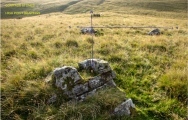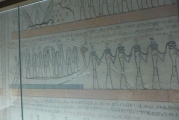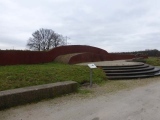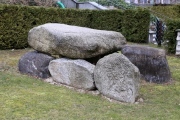Andy Burnham's Blog, page 160
September 13, 2021
Cerrig Duon Compass stones
A collection of large boulders arranged such that the high points of the stones are aligned accurately to the cardinal points. The stones lie about 300 feet North West of Cerrig Duon stone circle, on a slight slope.
Published on September 13, 2021 09:51
Parpalló Cave
Analysis shows the artists in the Parpalló Cave used natural pigments made from natural iron oxides such as haematite and goethite, more in the comments on our page. The Parpalló cave (Gandía, Spain) is one of the most important Palaeolithic sites in the Spanish Mediterranean region. It is characterized by portable art whose archaeological sequence covers a dilated period (26,000 to 11,000 BP) and includes plaquettes decorated with black and different shades of red and yellow pigments.
Published on September 13, 2021 03:09
September 12, 2021
Serapeum at Sakkara
Published on September 12, 2021 04:11
Tomb of Thutmose III KV34
The so called "tomb" of Thutmose III. The site has been closed for restoration (building protective screens for the wall art) for over 20 years but I was able to get special access in 2020. The tomb and sarcophagus was found empty, and there is a well inside. (Why would a corpse need a well?)
Published on September 12, 2021 04:03
Tomb of Thutmose II KV34
The so called "tomb" of Thutmose IV. The site has been closed for restoration (building protective screens for the wall art) for over 20 years but I was able to get special access in 2020. The tomb and sarcophagus was found empty, and there is a well inside. (Why would a corpse need a well?)
Published on September 12, 2021 04:03
September 11, 2021
Keros
The excavations at Dhaskalio, directed by Colin Renfrew and Michael Boyd have completely transformed our understanding of what was previously seen as a Cycladic enigma. Watch The Enigma of Keros TV Documentary, linked from the comments on our page.. Island of broken figurines. Why were Bronze Age figurines smashed, transported and buried in shallow pits on the Aegean island of Keros? Recent research sheds light on a 4,500-year-old mystery.
Published on September 11, 2021 03:15
September 10, 2021
Vorstengraf
The Vorstengraf (grave of the king) in Oss is one of the largest burial mounds in the Netherlands and Belgium. The hill was 3 metres high and had a diameter of 54 metres. The mound is now partly restored, and a portion of the circumference of the hill is marked with poles. It is visible on Google Street view via the link on our page.
Published on September 10, 2021 10:15
Oberbipp Dolmen
Who lived on the Swiss Plateau around 3300 BC? Analyses of human skeletal remains from the dolmen of Oberbipp and other sites have now been published - more in the comments on our page.. A Neolithic burial chamber discovered in October 2011. Initially only a large granite slab was exposed but investigation by the Archaeological Service of Canton Bern uncovered a dolmen 2 x 3m wide and 1m high. The dolmen has now been reconstructed behind the village church.
Published on September 10, 2021 05:13
Joya de Ceren
An study of the acoustics of the replica temazcal (sweatbath) at the village site of Cerén in El Salvador, more in the comments on our page.. Sometimes called, "America's Pompeii," this Classic Mayan village was suddenly covered by volcanic ash in 595 AD. The village lay less than a kilometre from Loma Caldera volcano. Excavations have found several homes made from adobe brick with thatched roofs, complete with simple interior benches, pots, tools and the remains of food. Top photo: The Temazcal replica. It is located in the public access area of the archaeological park, so people can enter it and experience the acoustic phenomena.
Published on September 10, 2021 02:40
September 8, 2021
Whit Stones
These two sizeable stones, possibly barrow remnants, are situated on Exmoor a couple miles west of Porlock, and several miles east of Lynton. They are easily accessible. The northernmost stone is 1.2m (4 feet) tall, the southernmost about 1.75m (5 feet 9 inches) tall, and both with the typical adornments for stones: lichen and bird poo!
Published on September 08, 2021 10:39










